
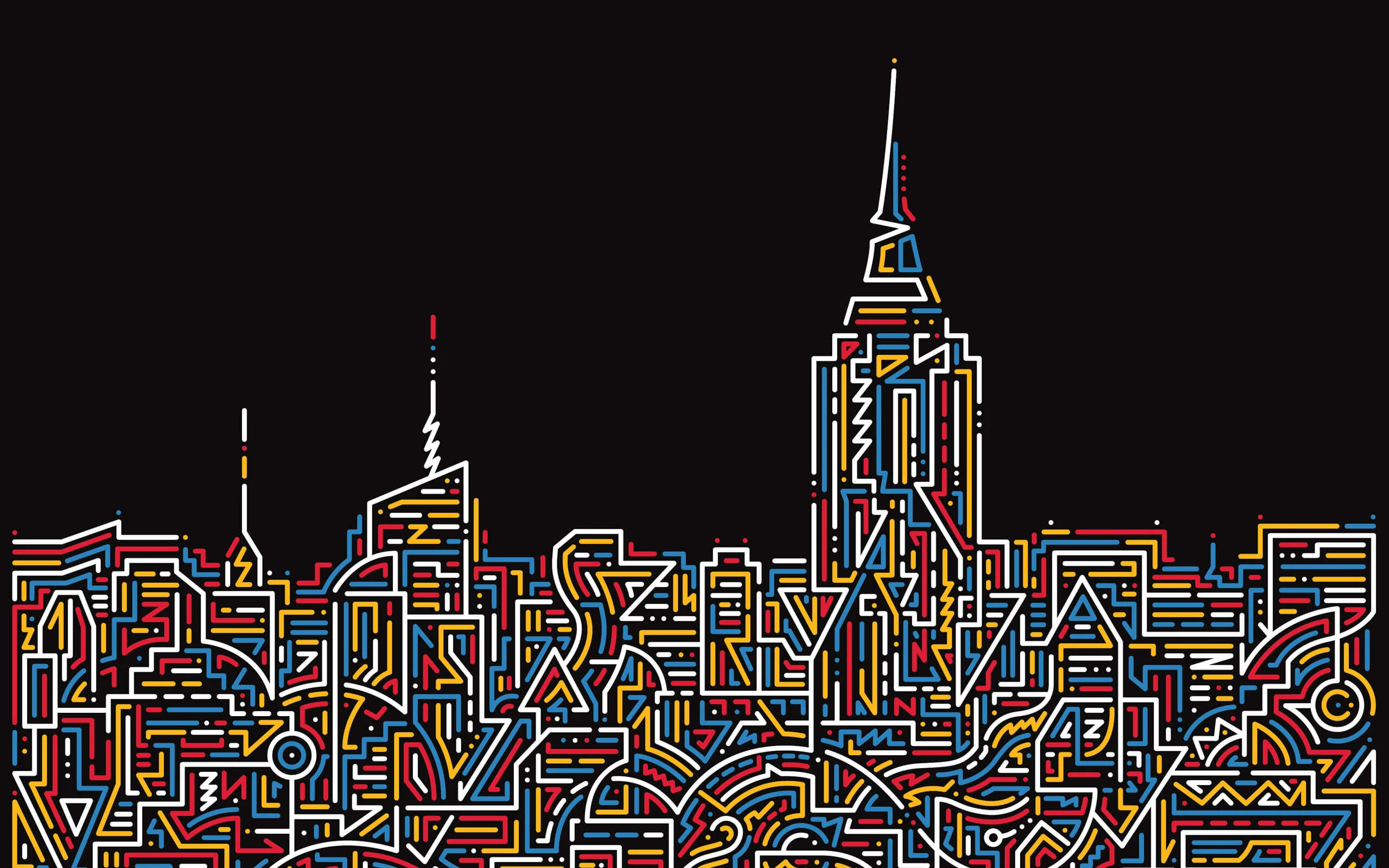
Korean artist Yoon Hyup first found his style at a block party in Seoul. He was there to do a live painting performance, and as the B-boys danced and DJs spun the decks, he began to paint to the music, in dots and dashes like hip-hop morse code.
This style has found its way into each cityscape Yoon paints, whether that’s the streets of New York City where he is currently based, or the places he travels to, like San Sebastián in Spain.
“I continue to use dots and lines because the rhythm or the energy of movement I feel when I draw them is difficult to resist,” he says. He compares the flow to skateboarding, sometimes imagining himself skating with his brush, curving across the canvas.
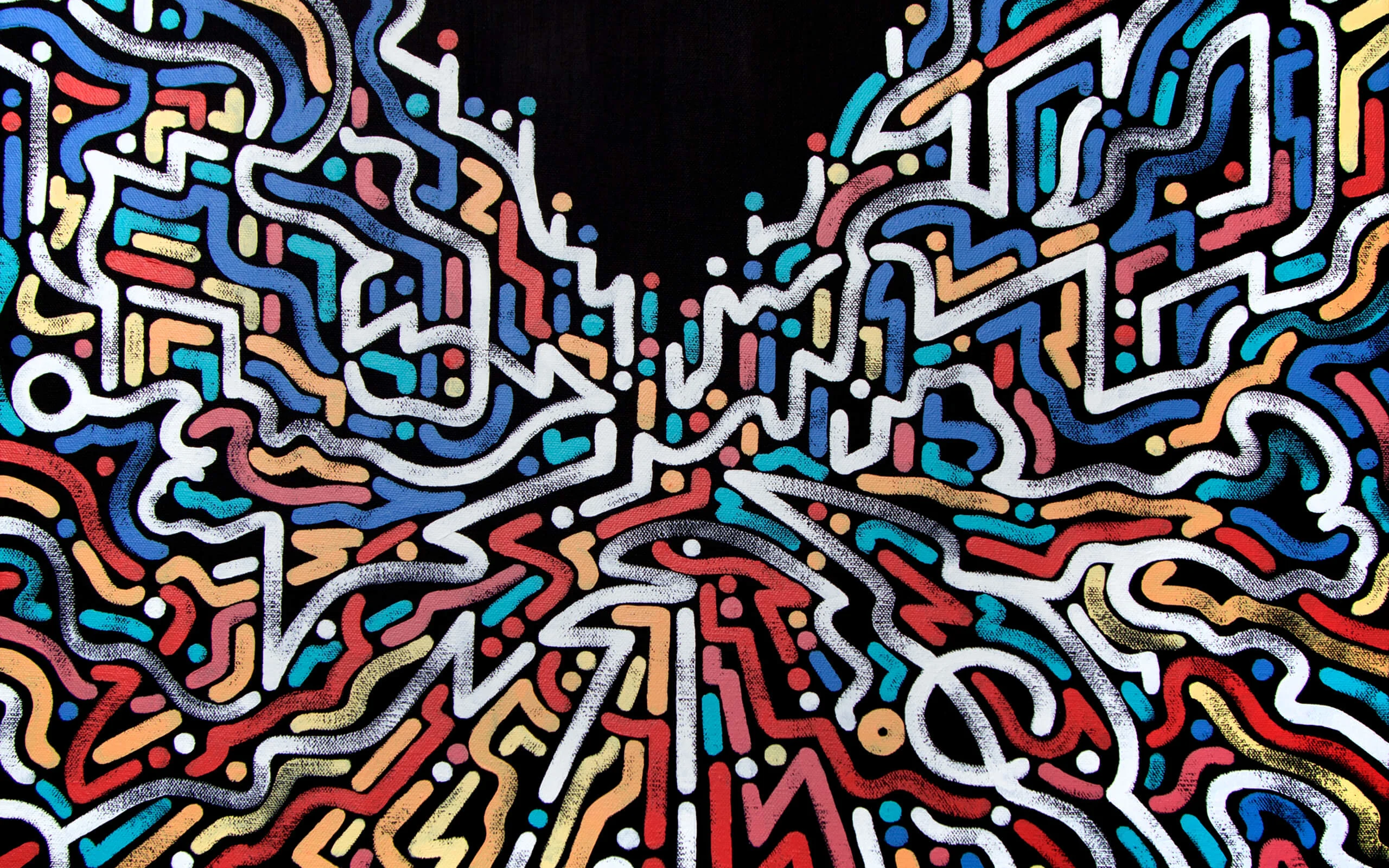
Yoon doesn’t sketch first, his meticulous marks are made freehand. He likens this approach to impromptu jazz. When he listens to music while he works, he feels like he’s transforming the sounds into visuals. He’ll draw different shapes depending on the rhythm of the music.
“When I listen to Give It Up Or Turn It A Loose by James Brown, I feel a hot energy swirling,” he says. “When I listen to Born To Boogie by Steve Watson, I feel soft blue and purple colors spreading away slowly. When I listen to Wave by Antonio Carlos Jobim, I feel two or three color groups arranged in subdued energy states.” He listened to the latter while he was painting the Beach of La Concha series after his trip to San Sebastián in Spain.
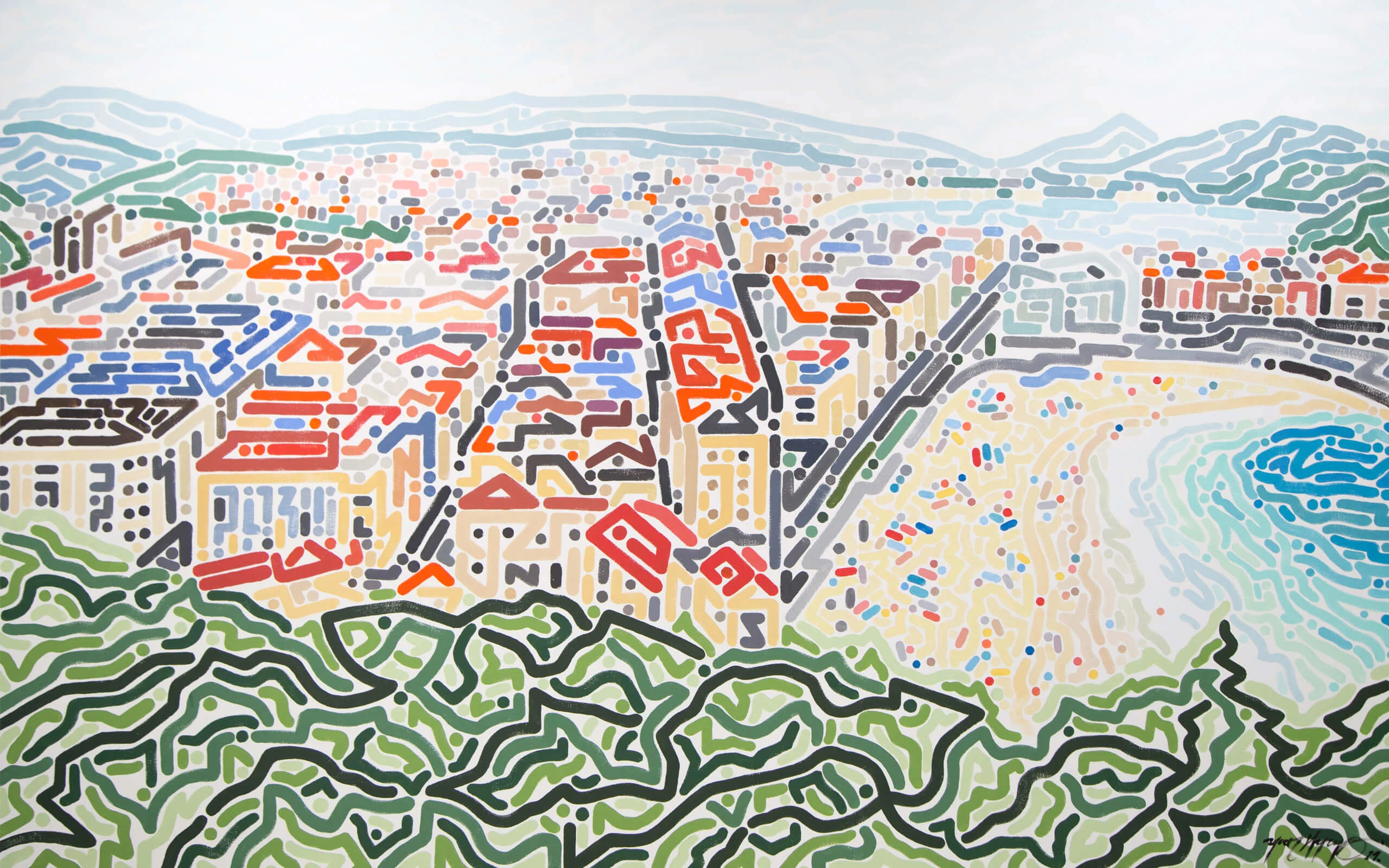
The balance between my imagination and the actual appearance is important.
The places Yoon travels to become his subject matter, but he doesn’t seek to mimic the scene as it appears in reality. “Memories and feelings of that day are evoked when I look at photos, and you can say that these elements are manifested to a greater extent in my work. I think the balance between my imagination and the actual appearance is important.”
Like a contemporary take on pointillism he’ll reconstruct a city scene using abstract pattern, but never losing its likeness. “If a place I really want to draw does not exist, I start my work by examining past photos, maps, videos and interviews.”
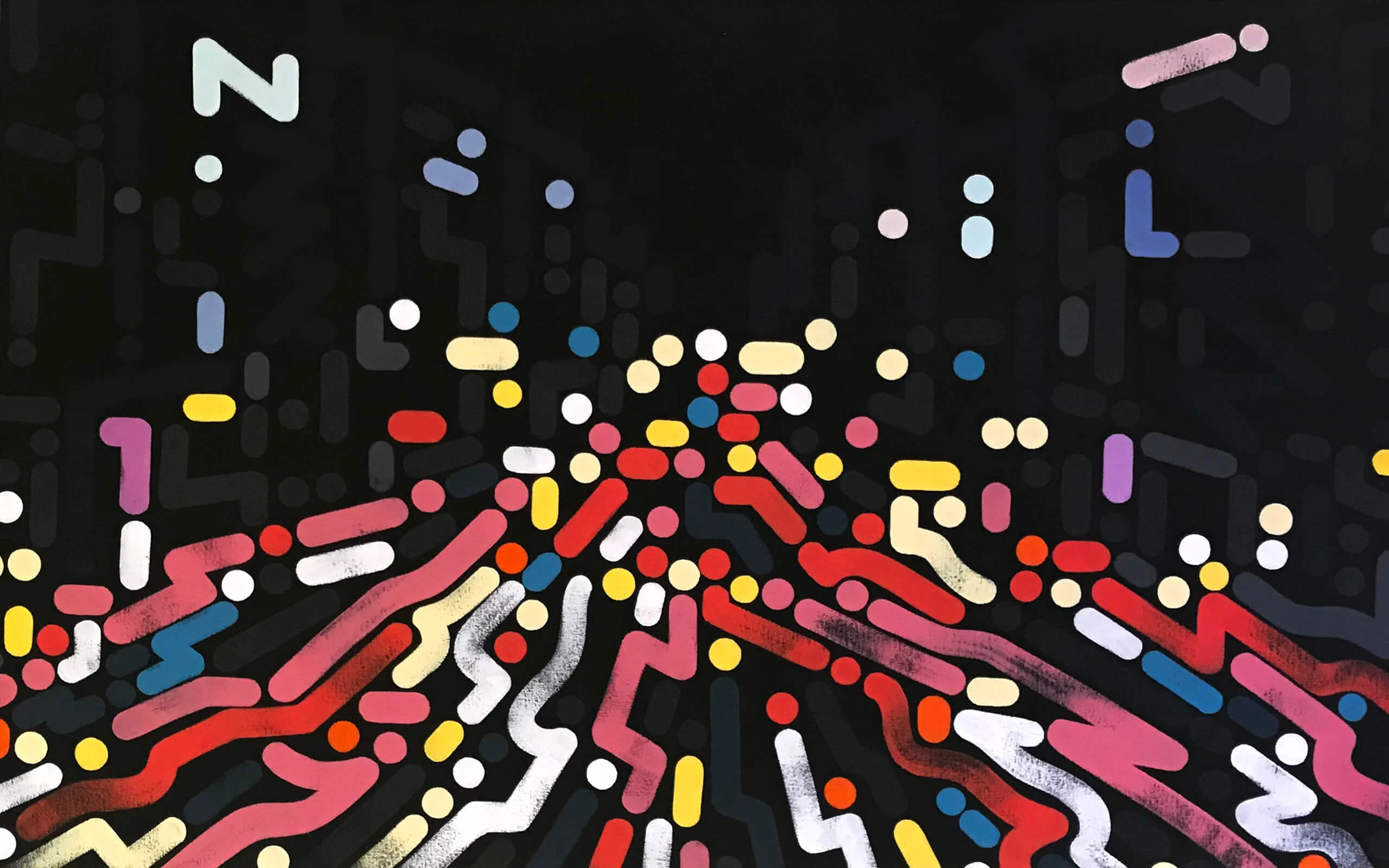

It felt as if New York had different faces depending on the situation - hope, love, welcoming, longing, sadness, loneliness.
When Yoon paints a city by day he expresses its urban energy and motion. The continuous and broken lines in his paintings are like trails left by cars and pedestrians making their way across the scene. When he paints a scene by night, he captures the electricity to suitable bokeh effect.
His hometown New York is a regular muse and his favorite view is one he’ll never get over: the spectacular and sprawling metropolis by night viewed from the window of an airplane as it lands at JFK. The Statue of Liberty, the Brooklyn Bridge and even the crammed shelves of a deli have also received his treatment.
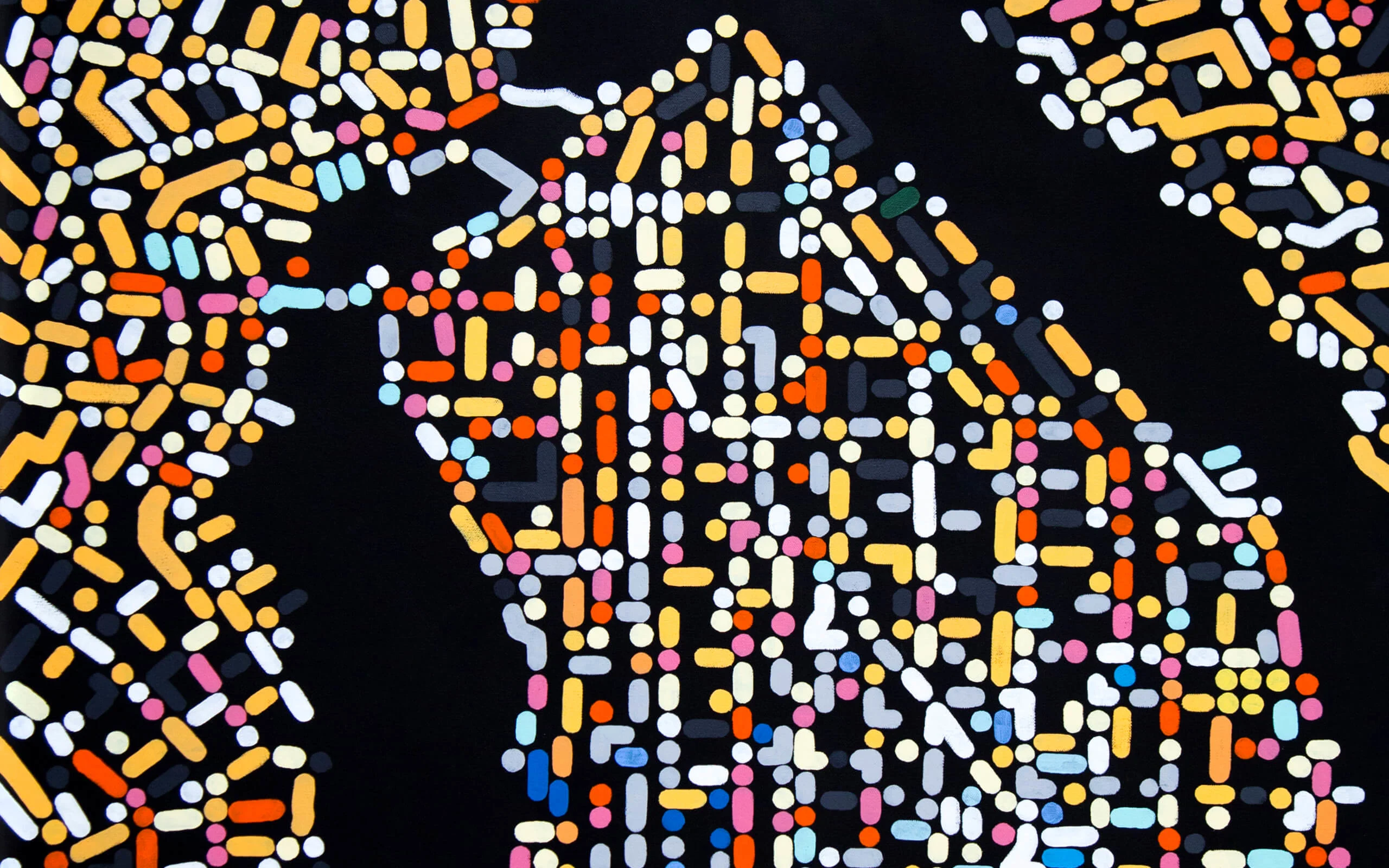
“I began to draw many cityscapes after I moved to New York from Seoul. It felt as if New York had different faces depending on the situation although it continued to remain the same place: hope, love, welcoming, longing, sadness, loneliness. This is why it possesses a beauty that is difficult to capture with words.”
It was through listening to rap in the 1990s that Yoon was first introduced to New York. “I think it’s a city where one can display more freedom because various cultures across the globe come together there,” he says. “The city motivates me because talented artists worldwide gather here, this humbles me and makes me work hard all the time.”

But whereas the cities he visits are his subject matter, the colors in Yoon’s work are inspired by his heritage — ancient wall paintings and traditional Korean clothing. “When I was young, I was unable to appreciate how wonderful they are in textbooks, but I learned to appreciate their novelty when I saw them in person.”
Traditional Korean cloud motifs make their way into his works too. “I really like things that have been quietly treasured for a long time, and I wanted to express them in my own style.” In the past he stuck to the five colors used in traditional Korean arts and textile patterns, known collectively as “Obangsaek,” these are blue, red, yellow, white and black.
Today Yoon feels more free to mix colors in a way he finds pleasing. “It is like producing a harmonious musical note,” he says, “and sometimes I discover colors that appear to be in disharmony, like jazz.”

